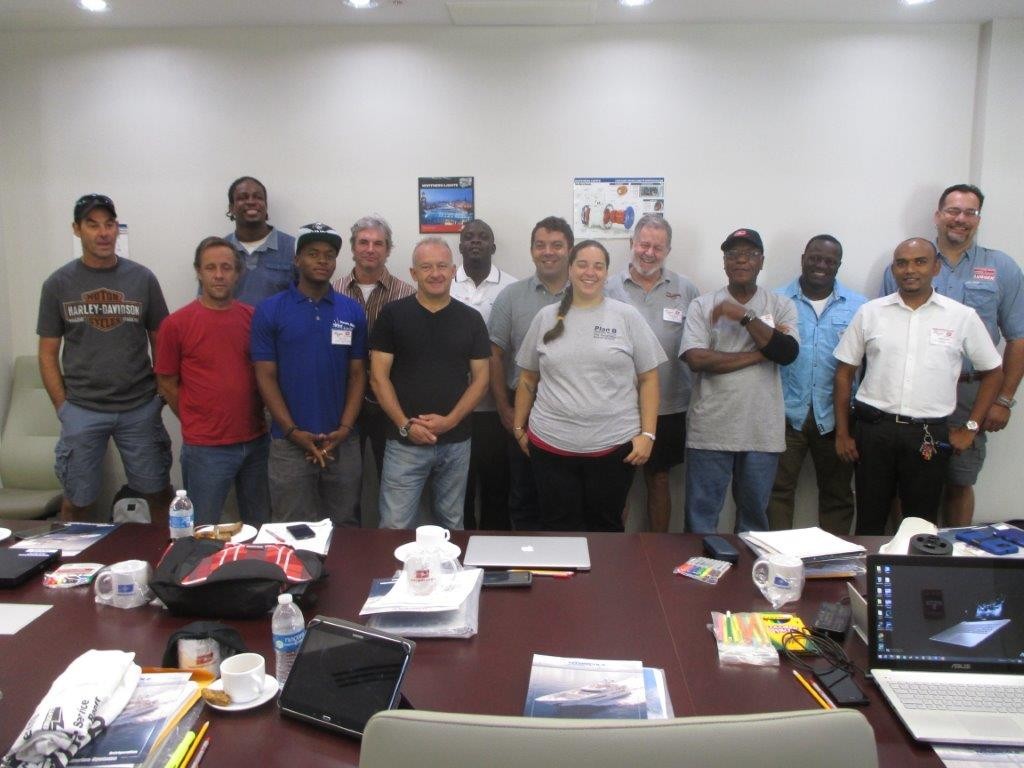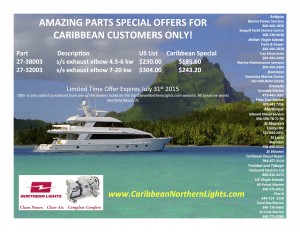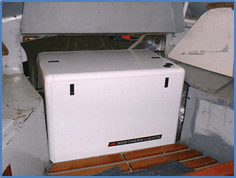Dealer participants attending the Caribbean Service Training, hosted by Parts & Power and Northern Lights Inc from 14-16 July 2015 in Tortola BVI, were all positive in their reviews and comments. There were 6 ratings of “Excellent” (5 out of 5) and 6 “Good” (4 out of 5). There were the inevitable complaints about Service Trainer and Technical Director, Dan Durbin’s notoriously bad drawings. But he always managed to get his point across. The participants were unanimous in the fact that the quality of the instruction was very good to excellent.
In addition to his decades of field service experience, Dan has been doing Service Training since the 1960’s for such organizations as the Army Engineer School, several Colleges and a variety of Diesel Engine/Generator manufacturers. He still does training for Northern Lights at customer training events in FL. Northern Lights SE Regional Service Manager, James Newball who has been with the company of over 6 years, said he even learned a few new things at the Training. James attended the training to support Dan’s efforts, and to explain Service issues that the factory is seeing around the world. It was also James first visit to the Caribbean to meet the Dealer network and hear, first-hand, the challenges faced by NL Dealers and Customers in the Caribbean.
All the participants learned about changes to the CaribbeanNorthernLights.com website. It recently received a major face lift thanks to the efforts of Jennifer Dowling and Scott Putnicki at NL factory headquarters in Seattle, WA. Information for customers and dealers is available on the website, as well as links to NL Parts & Operators Manuals, the Dealer Secured website, “Ask a Tech” inquiry link and Service Tips. A Parts Special was revealed that is only available to customers who visit the CNL.com website.
Northern Lights Dealer Service Training is challenging because of the various backgrounds of the dealers participating. Some are Mechanics looking for more information on DC and AC electric. Others are Electricians looking for more information on Diesel Engines. Dan is very good at getting the theory and hands on training across though.
Diesel engines are a continually changing product these days due to the changes required to maintain emissions compliance by the EPA, IMO and various other regulatory organizations. Although AC and DC electricity is constrained by the laws of physics, there are new products being introduced every year to meet customers increasingly sophisticated power demands, which make generators more complicated. “One of the best features of Northern Lights Generators,” commented Parts & Power MD Tom Gerker, “is that their DC logic has remained largely unchanged for over 40 years.” It worked well in the 1970’s and works well today. Despite that, NL is always striving to improve their systems, so the product continues to evolve.
That is the reason that Northern Lights and Parts & Power puts on regular Regional Training for their Caribbean Dealers.
Northern Lights Inc and Parts & Power want to extend their gratitude to the 12 participants who made the sacrifice in time and expense to attend the training, and become more knowledgeable about the product. Their Dealerships will receive a “golden wrench” next to their Dealer name on the NL Dealer Directory and on the CaribbeanNorthernLights.com website. We also want to extend thanks to the hard working staff at Parts & Power for making the event such a great success.






